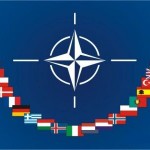(C) Kapok Tree Diplomacy. 2010. All rights reserved. Jeff Dwiggins. FREE CONTENT
Diehl lays out five dimensions of peace building which are applicable to the situation in the sense that CBM’s can be a significant component of peace building activities. Diehl’s dimensions are (1) the goal; (2) the strategy and activities; (3) the timing; (4) the context; and (5) the actors who will bring it about (8-11).
Applying Diehl’s “broader context” we could also say that conflict resolution – the elimination of the “willingness of parties to use violence” (9) – is a fundamental goal to achieving a lasting, sustainable peace. The StimsonCenter specifies communication, constraint, transparency and verification measures as primary CBM tools that could conceivably be used within these five dimensons of peacebuilding (2010). Which ones would be feasible or effective? It depends on the peace building dimensions.
The context, goal and actors primarily drive the strategy. The timing is important but secondary given the length of this particular conflict. The context of Israel/Palestine situation differs significantly from the US/Russia Cold War example, while being more similar to the India/Pakistan example in some respects.
The posts, views and opinions expressed on this site are completely my own and do not represent the views or opinions of the Department of Defense (DoD), the Department of the Navy (DON) or any of the Armed Forces.
In the case of the USA and Soviet Union you had two nearly equal and powerful nations satisfied with the status quo and each with comparable monitoring and verification capabilities. In Israel/Palestine you have one “nation-to-be” in Palestine very dissatisfied with the status quo, far weaker militarily and economically, and with significantly less advanced intelligence, monitoring and verification capabilities. Thus, the Israel/Palestine scenario lacks some of the elements of the favorable environment that allowed CBMs to build trust in the USA/Russia case.
A contextual analysis reveals that the disparity in capabilities, the clash of religious and cultural factors, and the tight geographic proximity contribute to a deep lack of trust between the parties. Additionally, there are other very important issues that contribute to this mistrust as well such as the disputed status of Jerusalem, the disputed borders of a future Palestinian state, the right of return for Palestinian refugees who fled their homes and the issue of security for both parties. It’s what makes the Middle East the powder keg that it is and creates such a challenge for CBMs or any other peace building measure.
Let’s look at the players. The U.S. is obviously a very important part of any negotiated peace settlement. Prime Minister Netanyahu of Israel recently told U.S. President Barack Obama, “We’re committed to that peace. I’m committed to that peace … Israelis are prepared to do a lot to get that peace in place, but they want to make sure that after all the steps they take, that what we get is a secure peace. We don’t want a repeat of the situation where we vacate territories and those are overtaken by Iran’s proxies and used as a launching ground for terrorist attacks or rocket attacks” (July 6, 2010). But is Obama more interested in halting Israeli settlements are resolving the bigger picture?
Saudi Arabian Foreign Minister Prince Saud Al-Faisal has a slightly different take, saying “Incrementalism and a step-by-step approach has not and– we believe– will not achieve peace. Temporary security, confidence-building measures will also not bring peace. What is required is a comprehensive approach that defines the final outcome at the outset and launches into negotiations over final status issues: borders, Jerusalem, water, refugees and security” (Clinton & Al-Faisal, 2009).
That brings us to the strategy. A step-by-step, incremental trust-building approach or one fatal swoop that defines the endgame and the parameters it entails? The two sides are far apart on that question. But I would say that CBMs could be part of either approach. In fact, some CBMs are already having an effect. The New York Times reports, “To Mr. Netanyahu’s credit, settlement has slowed considerably since the 10-month moratorium was put in place, and that has improved the atmosphere for negotiations. There are other positive currents. Violence against Israelis is down. Palestinian security forces are increasingly competent at policing the West Bank” (Aug. 30, 2010). Extending the moratorium on CBMs could be a very effective CBM.
The Israeli Defense Forces also report the following: “Since the beginning of 2010, 60 roadblocks have been removed; a 50% increase since 2009 of permits issued to enter Israel; in the first half of 2010, there has been a 15% increase for Palestinian patients receiving medical treatment in Israeli hospitals; and an 11% increase of the number of trade permits issued for entry to Israel” (Aug. 30, 2010). Again, these are positive steps in the right direction and may be considered effective CBMs in the security and socio-economic arena.
Other CBMs that could be implemented prior to or as part of a phased-in peace settlement might include the following important elements: (1) an extension of the Israeli settlement moratorium in Palestinian areas; (2) removing additional road blocks and security checkpoints; (3) limiting Israeli Army incursions into Palestinian-controlled areas in the West Bank; and (4) establishing a dispute resolution forum (American Israel Public Affairs Committee). The first two are very possible; the last two depend on security and political concerns being mitigated. Major international support would help these measures get implemented.
I think that many of the Stimson Center CBM tools would be helpful, especially some of the communication, transparency and verification measures, but these will not happen without Israeli and Arab state support to help to bridge Palestine’s technology gap in these areas.
Of course, not everyone agrees on the effectiveness of CBMs. Saudi Foreign Minister Prince Saud Al-Faisal’s remarks come to mind. Helena Cobban says, “To imply that you need full trust between the two sides to the dispute before you expect them even to sit down at the peace table?? That’s nuts! The process of so-called “confidence building” that Dennis Ross was so happy to see dragging on for years and years in the 1990s did not end up building up any trust at all. Just the opposite. It built mistrust– on both sides. Not least, because people still locked into the dispute on the ground had no idea where the final process was heading” (Aug. 1, 2009).
I’m not quite as pessimistic about CBMs, but I do feel they must be part of a broader context and strategy in Israel/Palestine where they are part of the means to a defined end game, not an end to themselves. Due to the depth of issues surrounding this scenario, I do not expect major CBM undertakings like a regional communicaton center or on-site military inspections to be feasible without further progess in peace negotiations. Some of the economically-tied CBMs could be the most effective to implement from Israel’s standpoint.
Numerous CBMs, however, may not necessarily be crucial in bringing these parties to the table. The efforts of major powers like the U.S. will determine that. They could be part of a phased-in peace settlement “final” solution where the heavy lifting is done in one fatal swoop. With that in mind, some of the lessons learned in the Twin Peaks case are applicable: (1) Continue high level US involvement; (2) strengthen high-level contacts in Israel and Palestine; (3) partner with other governments to solve the problem; (4) and keep abreast of spoilers like Hamas (Nayak & Krepon 42-45). If consistently followed, these informal communication CBMs could help improve the situation, but any lasting peace would still be miraculous.
American Israel Public Affairs Committee. (n.d.). Bold Steps by Arab States Needed to End Conflict. Retrieved September 14, 2010, from American Israel Public Affairs Committee: http://www.aipac.org/The_Issues/index_26640.asp
Clinton, H. R., & Al-Faisal, P. S. (2009, July 31). Remarks With Saudi Arabian Foreign Minister Prince Saud Al-Faisal. Retrieved September 14, 2010, from U.S. Department of State: http://www.state.gov/secretary/rm/2009a/july/126829.htm
Cobban, H. (2009, August 1). Just World News with Helena Cobban. Retrieved September 14, 2010, from Just How Inept is Ross as a ‘Mideast Expert’?: http://www.justworldnews.org/archives/003705.html
Israel Defense Forces. (2010, August 30). Recent Easing of Measures in the West Bank, 30 Aug 2010. Retrieved September 14, 2010, from Official Blog of the IDF: http://idfspokesperson.com/2010/08/30/recent-easing-of-measures-in-the-west-bank-30-aug-2010/
Nayak, P., & Krepon, M. (2006). US Crisis Management In South Asia’s Twin Peaks Crisis. The HenryL.StimsonCenter, Report 57, 1-57. Web. 14 Sep 2010. Academic Search Premier. Retrieved at NorwichUniversity Library.
Obama, B. H. (2010, July 6). Remarks Following a Meeting With Prime Minister Benjamin Netanyahu of Israel and an Exchange With Reporters. Retrieved September 14, 2010, from faqs.org: http://www.faqs.org/periodicals/201007/2089496631.html
The HenryL.StimsonCenter. (2010). Confidence-Building Measures in South Asia. Retrieved September 14, 2010, from The Henry L. Stimson Center | South Asia Program: http://www.stimson.org/southasia/?SN=SA2001112047#accords
Like this:
Like Loading...





Leave a Reply